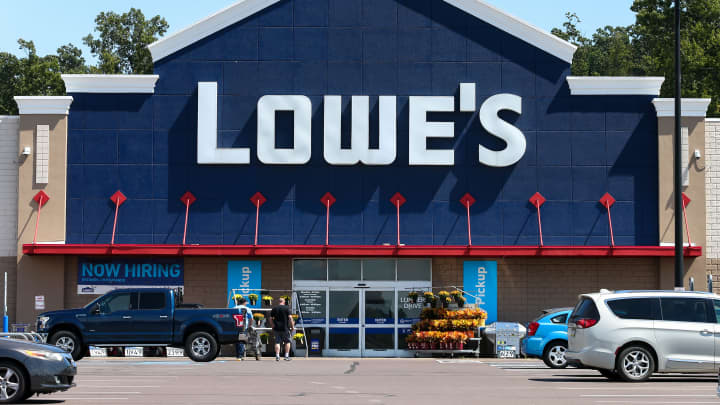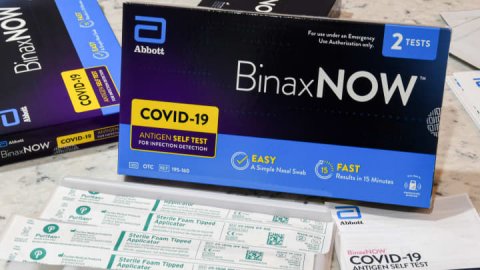
reported mixed results for its fiscal second quarter on Tuesday, as consumers tackled springtime projects and helped offset weakening home improvement demand.
The company topped Wall Street's earnings estimates, but fell slightly short of expected sales.
The home improvement retailer stuck by its full-year forecast. It anticipates total sales will range between $87 billion and $89 billion for the period. It projects comparable sales will drop by 2% to 4% this fiscal year. It expects adjusted earnings per share will range between $13.20 and $13.60.
On a call with investors, CEO Marvin Ellison said Lowe's feels good about the long-term outlook for home improvement because of the older age and low availability housing in the U.S.
But, he added, the business will have a tougher time in the short term.
"When you look at consumer sentiment, we noted that we're seeing a pullback in DIY [do-it-yourself] discretionary spend," Ellison said. "And that's really for us the overall theme of how we see the second half of the year."
Here's how the company did for the three-month period that ended Aug. 4 compared with what analysts expected, according to consensus estimates from Refinitiv:
The company's closed at $225.74 on Tuesday, up nearly 4%.
Lowe's net income for the three-month period was $2.67 billion, or $4.56 per share, compared with $2.99 billion, or $4.68 per share
Net sales fell from $27.48 billion a year earlier.
Lowe's sales are slowing this year as unusually high demand fueled by the Covid pandemic fades. The home improvement retailer earlier this year warned Wall Street of that slowdown, in May.
Rival has also warned of waning demand. Last week, the company reaffirmed expectations for a tougher year ahead, even as it . Home Depot CFO Richard McPhail said customers are tackling smaller projects and buying fewer big-ticket items, such as appliances.
Both retailers , as consumers deal with rising interest rates and elevated prices of everyday items — yet the companies also benefit from a strong jobs market and a shortage of housing in the U.S.
level in more than two decades, making first-time homebuying unaffordable for some and discouraging current homeowners from moving. Despite higher mortgage rates, home prices rose for the fourth straight month in May, according to the .
As more Americans stay put, the result should be increased investment in home renovations and projects. But Ellison said shakier consumer confidence is leading to softer discretionary sales.
"What our customers are telling us is that they feel good about their employment situation," he said on a call with CNBC. "They feel good about the amount of equity in their home and they know that there are projects they're going to have to get done, but they're just kind of waiting to see what's going to happen in the macro environment."
Comparable sales in the second quarter decreased 1.6% in the fiscal second quarter. That's still better than the 2.6% decline that analysts expected, according to FactSet.
Lowe's said it got a lift from spring projects, online growth and momentum with home professionals.
Lowe's has been working to attract more home professionals, which tend to be bigger and more steady spenders. Only about a quarter of Lowe's sales come from home professionals, while they account for about half of sales at Home Depot.
On the call with investors, Ellison said those professionals tell Lowe's that they still have a healthy amount of projects in the pipeline. That helps drive purchases of paint, plumbing tools and more.
But after a period of higher costs and out-of-stock items, falling prices are now contributing to lower sales, Ellison said on the call with CNBC. Not only have lumber prices dropped significantly, but appliances have come down in price, too.
He said appliance brands have reverted to pre-pandemic levels of promotions. Those discounts, which are funded by the suppliers, are factored into company guidance for the second half of the year, he said.




